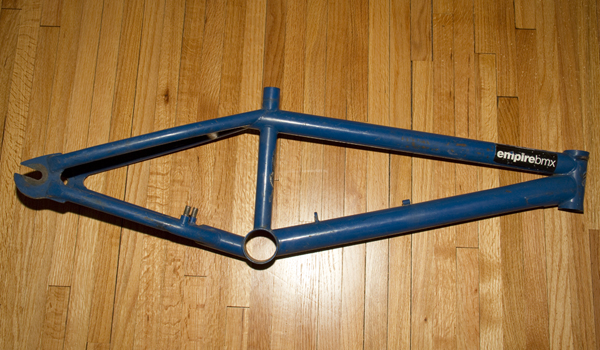
The other day while I was moving some things around in the garage, I got caught up looking at the first aftermarket frame I ever owned. I’m sure a lot of you saw the photo above and knew instantly that the frame is Ruben Alcantara’s signature Macneil Ruben. Looking at it, I really started to focus in on the different features of the frame and just how much has changed over the years to improve frames making them lighter, stronger, simplified and easier to ride. Although this frame is from the early 2000’s and there is A LOT of history that came before it, this was one of the more progressive frames at the time. I thought it would be cool to compare the Ruben frame to some of the frames that are available today and talk about some of the changes and innovations that have come since… Let’s take a closer look!
Let’s talk about the specs of the Ruben frame first. This frame was made from full 4130 chromoly with a 74.5 head tube angle, 71-degree seat tube angle, 20.75″ top tube length and a 14.25″ long chain stay length. The frame featured an American head tube and bottom bracket, a gusset on the down tube, a wishbone chain stay, 5mm thick drop outs and welded on gyro tabs, cable guides and brake mounts. The frame came in black, blue and tan with a weight of 6.2 lb. — That was really LIGHT in 2001! This frame had a few subtle features as well that put it ahead of the game, like the lower wishbone to accommodate for the smaller gear ratios that riders were starting to run. I know I personally ran a 36-13 on this frame (The OG Macneil Guard to be exact) and that was pretty crazy since a lot of riders were still running 44-16.
In all reality, other than the shorter chain stay lengths that are available today and lighter weight, the geometry hasn’t changed too drastically.
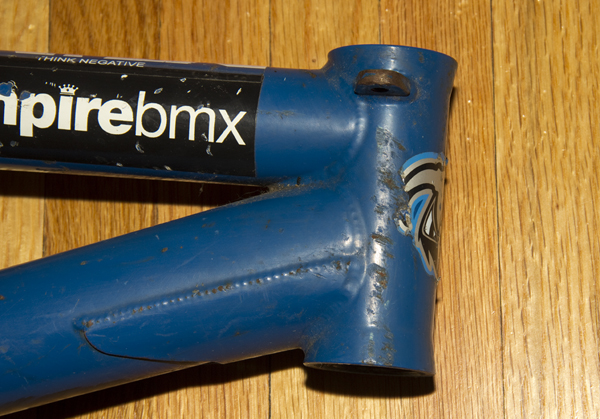
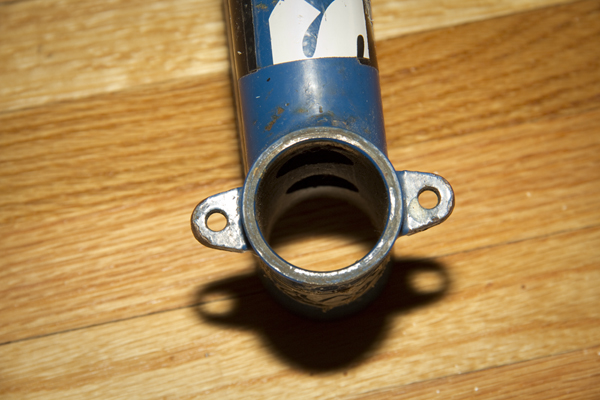
Looking at the head tube, it’s pretty easy to see where things have changed. All frames these days feature an integrated head tube that eliminates the need for headset cups that were required to be pressed (or pounded) in and pounded out when they cracked or needed to be removed. Welded on gyro tabs were eliminated by removable tabs that are screwed in or no gyro tabs at all thanks to brakeless riding taking over. The one thing that has remained the same is the gusset on the down tube. We still see top and down tube gussets on most frames these days from external to internal, integrated gussets and Investment Cast gussets. The gap between the top and down tubes has also increased thanks to smaller tubing and slightly taller head tubes… Gotta love that gap.
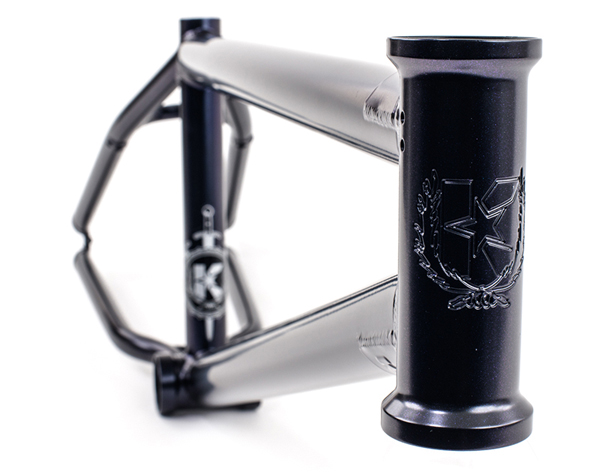
The Kink Titan frame with an integrated head tube, removable gyro tab threads and gussets on the top and down tubes for increased strength.
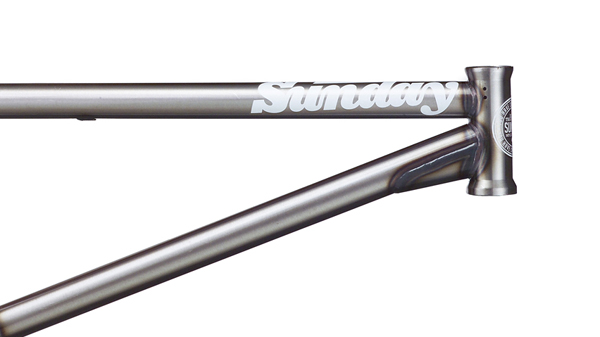
Sunday Bikes Radocaster frame with their unique down tube gusset that has been featured on most of their frames since their first frame became available in 2006.
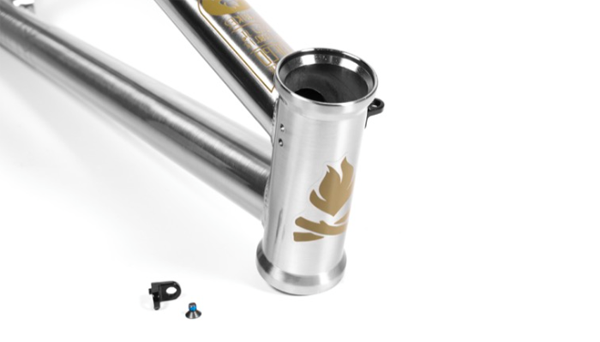
Flybikes Fuego frame that shows you the integrated gyro tabs that replaced the welded on form. Fly also use integrated internal gussets on the top and down tubes along with an offset thickness head tube that create a strong joint similar to the external gussets.
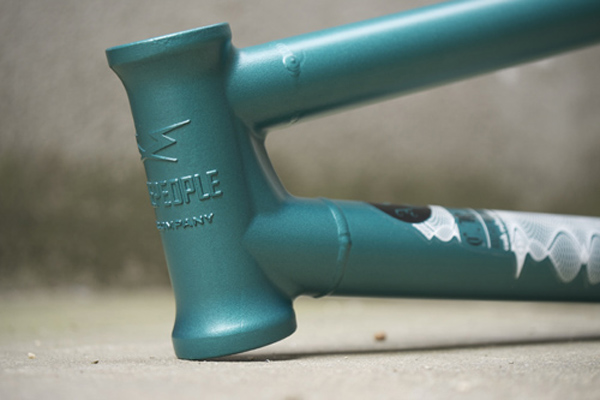
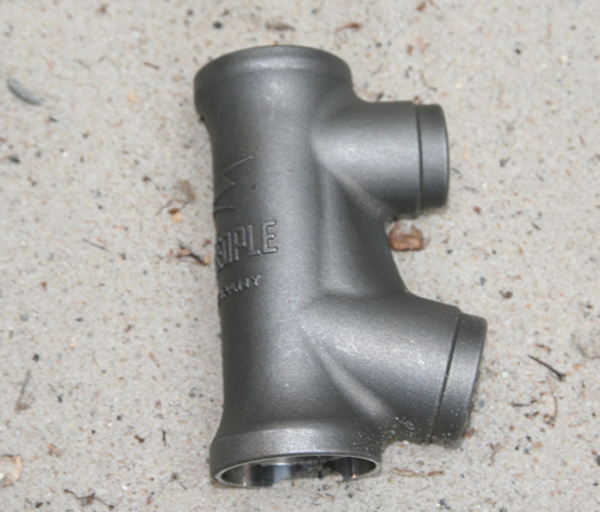
The Wethepeople C.R.E.A.M frame featured an Investment Cast head tube that uses a specially designed head tube that slides into the top and down tubes moving the weld away from the high stress joint from a traditional head tube and top / down tube junction.
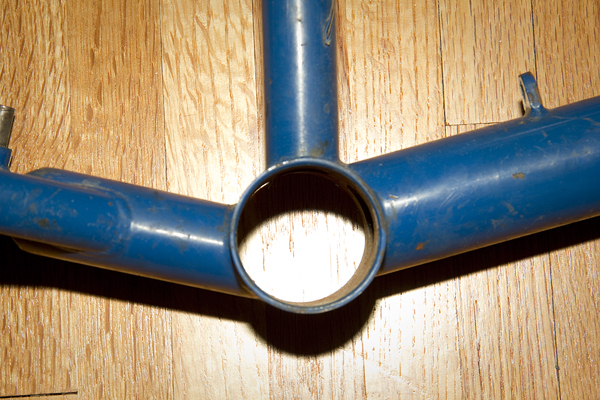
Next up, the good old American bottom bracket! Similar to the head tubes from the past, these bottom brackets required cups to be pressed or pounded in for the bearings fit in. We still see some lower end / entry level complete bikes with American bottom brackets today, but most have been replaced with the MID or Spanish bottom brackets that are the standard today.
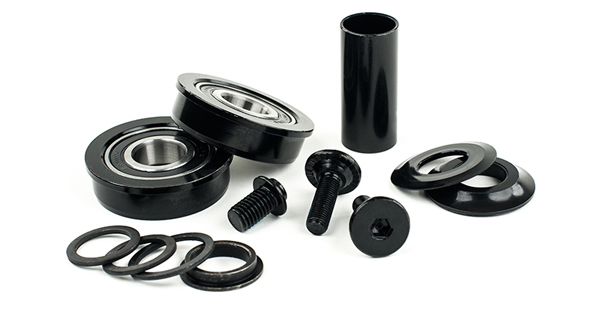
Mission still offer an American bottom bracket kit. You can see the cups with the bearings inside which are much larger than the Spanish or Mid options.
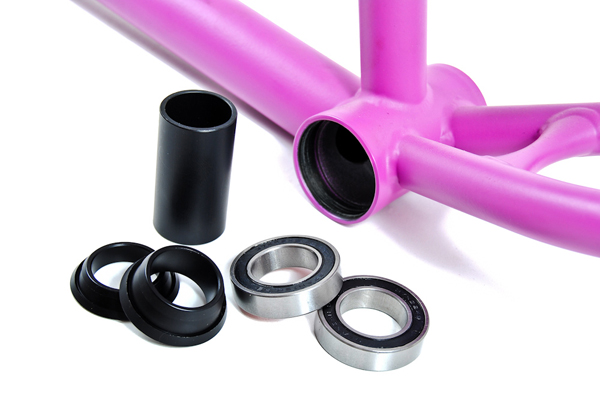
The Spanish bottom bracket found on Flybikes frames along with Kink and a few other brands. These bearings a slightly smaller than the more common Mid bottom bracket.
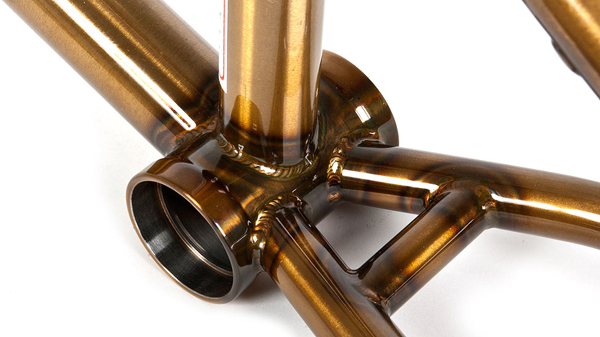
The Moto Mike frame from Fit features a Mid bottom bracket. The Mid bottom bracket uses the bearings from the American bottom bracket, but eliminated the need for cups with the design of the bottom bracket making it so they can easily be pressed in and removed without much hassle. Prior to the Spanish and Mid bottom bracket becoming the standard options, there was the Euro bottom bracket. The Euro bottom bracket was similar to the American version, except smaller and required the bearings and cups to be threaded into the frame. However with the simplicity of the Mid and Spanish bottom brackets, the Euro bottom bracket was pretty short lived.
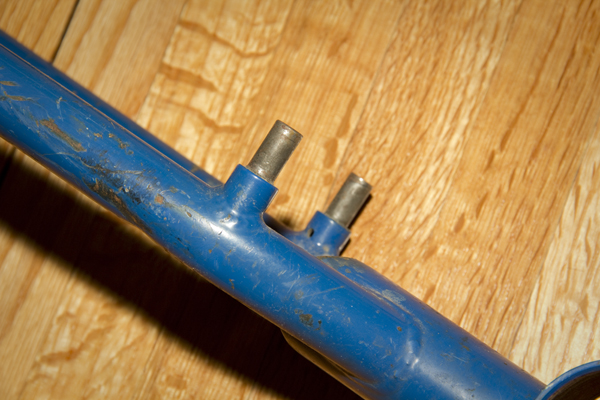
Next up, brake mounts! Above is a look at the chain stay mounts that were welded on to the frame, you couldn’t remove the mounts — unless you decided to take a saw to them — and made more sense at the time with most people running brakes. We still see welded mounts on some frames, but more commonly are the different versions of removable mounts that give the rider the option of running brakes or not. There are even a few frames out there that are completely brakeless and feature no brake mounts.
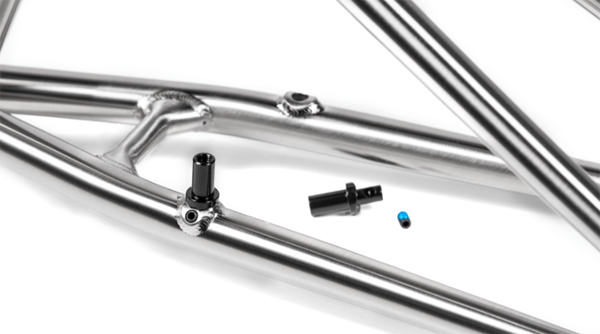
Flybikes have been big on innovating the brake mounts to make them easier to install and remove along with making them work better with a clean look. They use the “Easy Brake System” that allows you to drop the mount into the slot and tighten it into place with an angled grub screw that holds the mount in place and prevents it from wobbling.
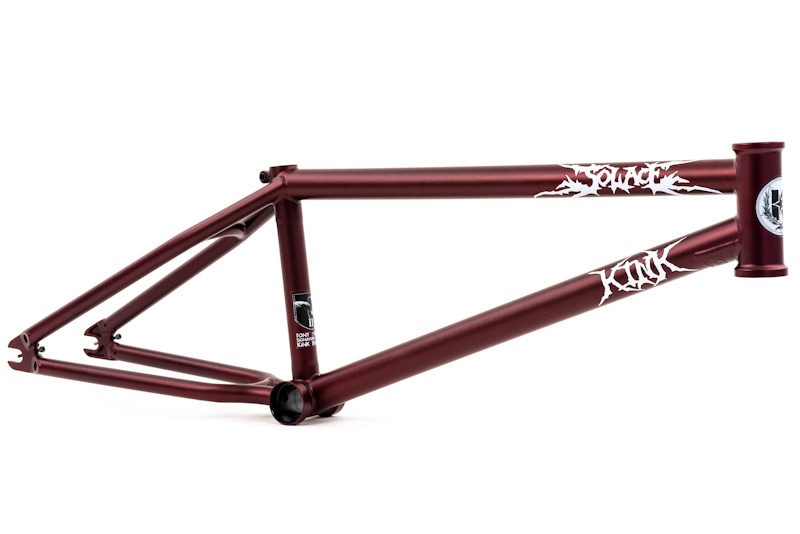
Tony Hamlin’s signature Solace II frame from Kink is a 100% brakeless design. There are no removable gyro tab threads, cable guide mounts or brake mounts. Clean and simple for those of you committed to the brakeless life.
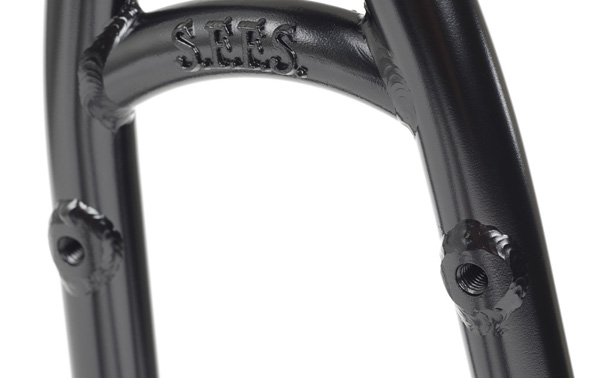
Subrosa Thunderbeast frame removable mounts.
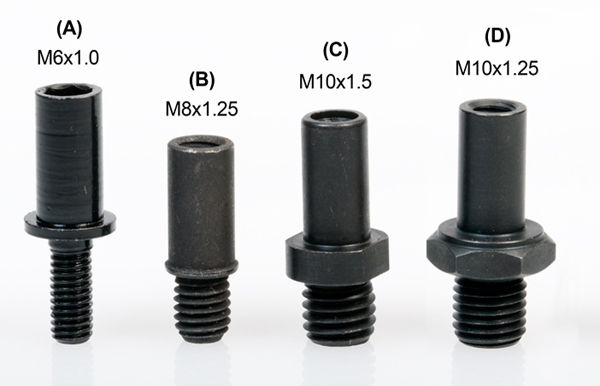
Photo: Stolen Bike Co.
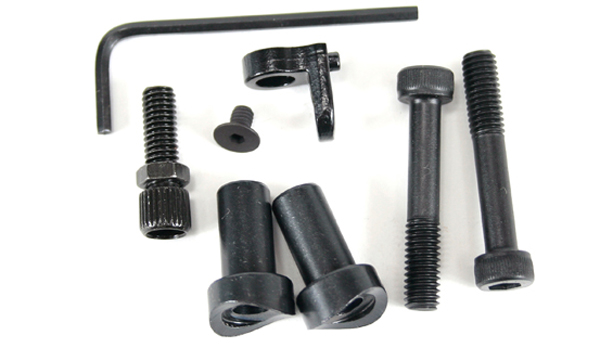
S&M removable mount kit.
The other style of removable brake mounts come in a few different versions based on the size or style the brand uses. Above are a few different styles and sizes of thread on mounts that Stolen Bike Co. posted up and below that are the S&M removable brake mounts that uses one bolt to hold the brakes and mounts in place. This also gives you a look at the removable guides.
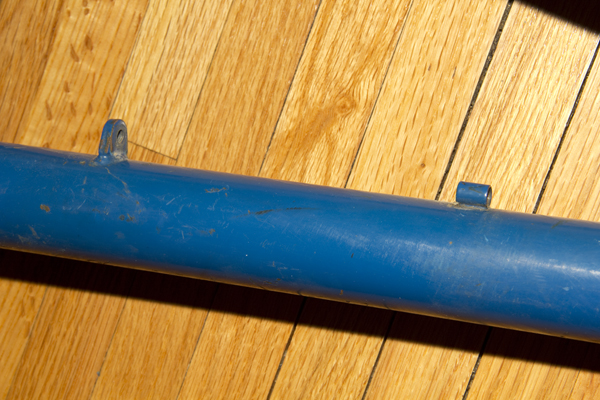
We can’t talk about brake mounts without mentioning the good old fashion cable guides that were welded on to the frame to keep your straight cable or gyro cable in place. You could even bust out the London Mod to run dual cables on the bottom or get the zip ties out to keep your cable from flopping and rattling like crazy.
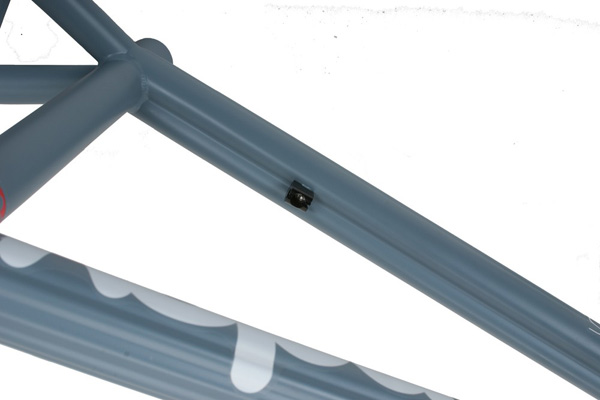
Sunday Bikes use a unique channel on their top tube to keep the brake cable slightly hidden and in place with removable mounts.
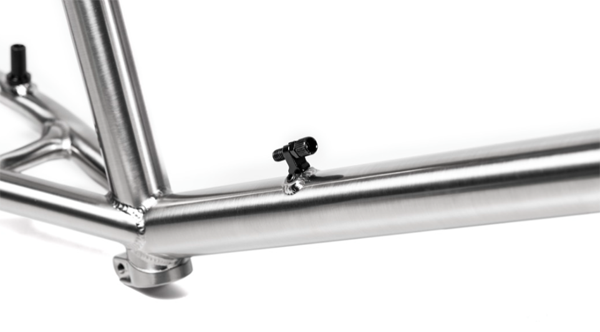
Similar to their brake mounts, Fly use their “Easy Brake System” removable mounts that feature an angled grub screw that allows you to remove the mount without having to remove the cable which can make taking the brakes on and off a quick process.
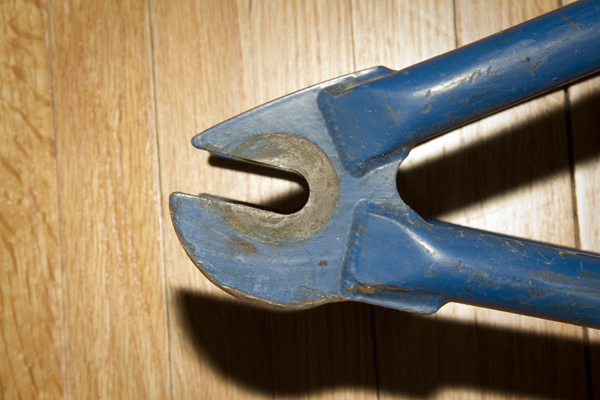
Drop outs… Dinner plates… I don’t know. The Macneil Ruben drop outs were 5mm thick and had plenty of extra beef to help prevent bending and breaking. Do you notice the rust circle? That’s from my peg that I ran… If that gives you any perspective on the size.
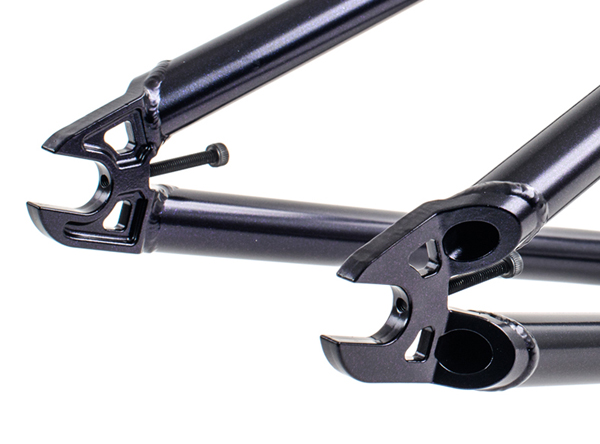
Kink Titan Investment Cast drop outs with extra machining and removable chain tensioners.
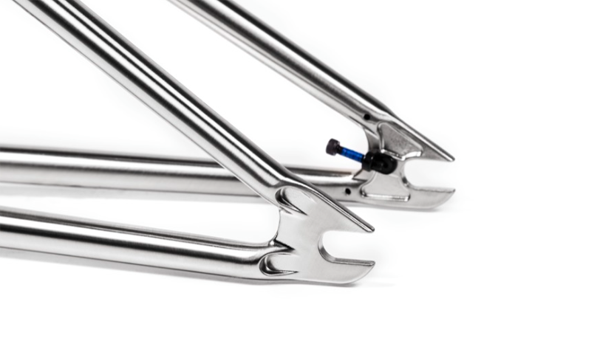
Fly Bikes Fuego frame with Investment Cast drop outs and removable chain tensioner.
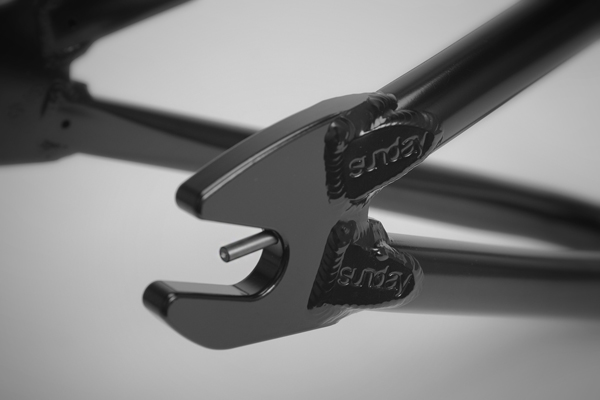
Sunday Bikes use 8mm thick hollow drop outs that are cast and CNC machined. They weigh the same as the traditional 5mm thick drop outs, but provide additional strength.
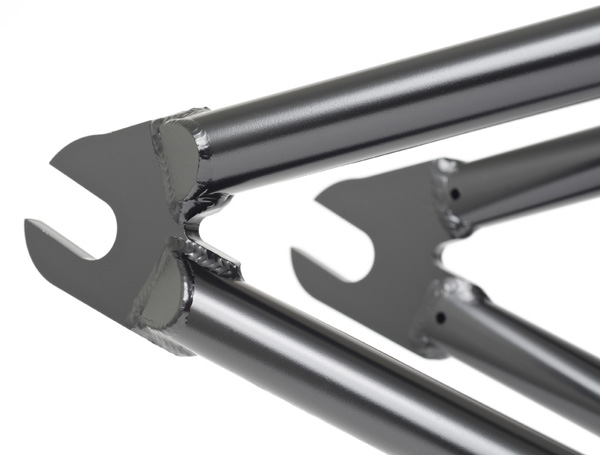
More traditional 5mm thick drop outs found on the Subrosa Thunderbeast frame.
Looking at each of these drop outs, although all different, they do have some things in common and that’s the overall size is smaller to fit pegs flush and are shaped to give some extra clearance for hub guards that have become pretty standard for most people that ride with pegs and grind a lot.
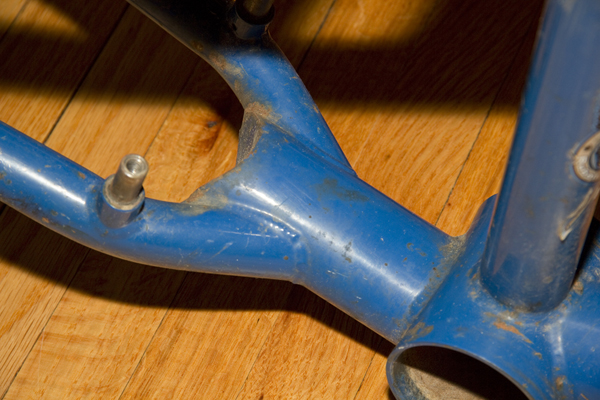
The good old fashion Wishbone! Even though it’s not as common as it used to be, it’s still used on frames today and continues to prove to make for a strong back end that is stiff. The tires weren’t as big back then, so the gap between the chain stays and seat stays were smaller as well.
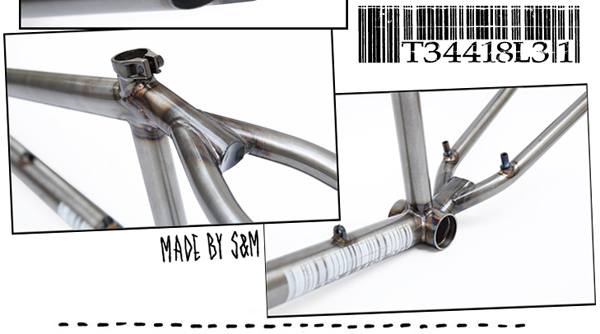
Can’t go wrong with the classic Terrible One Barcode frame that features wishbones on the seat and chain stays.
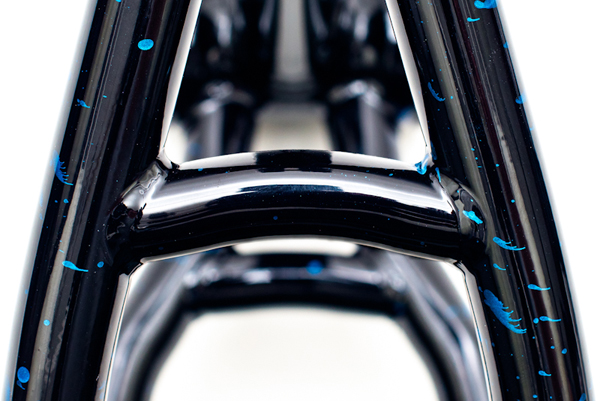
More commonly, we see bridges that are smaller and use less material that still create a strong and sturdy alternative to the wishbone like the Solace II frame from Kink uses.
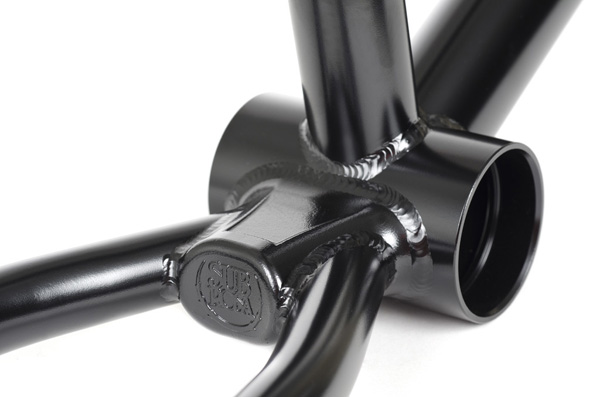
The Subrosa Thunderbeast frame uses a wishbone on the chain stay. In comparison to the Ruben frame above, you can see the smaller and shorter tubing. The shorter length accounts for the shorter chain stay lengths (13.50″ versus 14.25″).
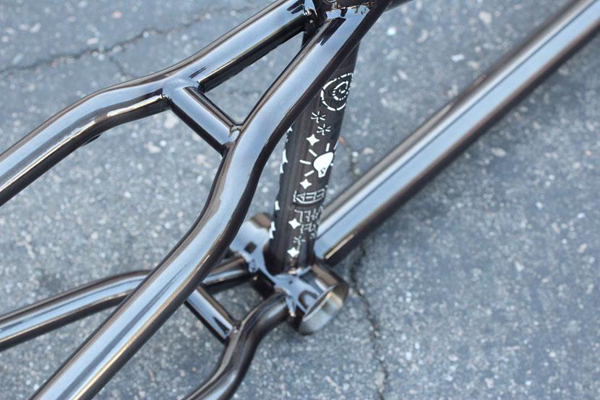
To account for those larger 2.40″ tires that a lot of brands offer these days, frames have wider back ends. Cult use S-Bends on their stays to give the tires more room.
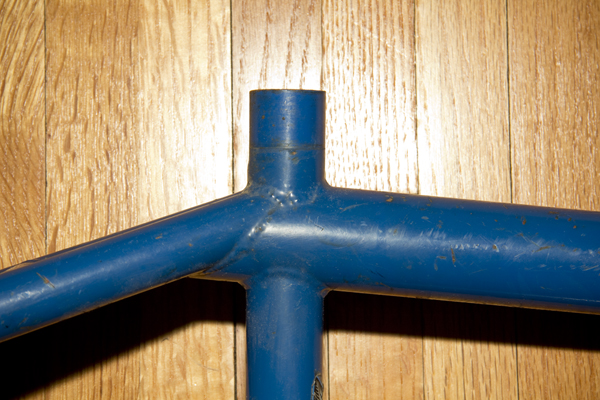
And finally… The seat tube. This is one of those things that we have seen A LOT of changes and different options for thanks to the integrated seat post clamp. Some frames still offer this more traditional seat tube that requires a seat post clamp to help reduce the overall cost of a frame, but for the most part frames come with a seat post clamp built in and the tubing is much shorter off the top to save weight.
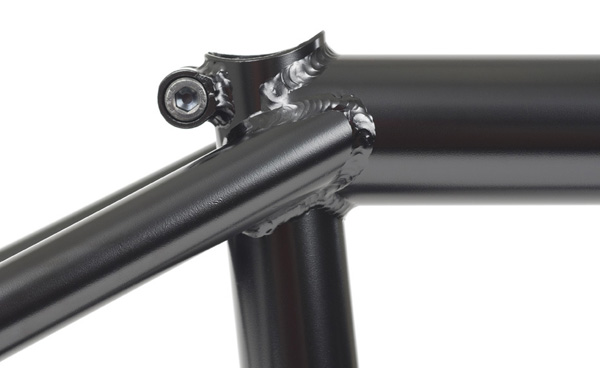
Subrosa’s Thunderbeast uses an integrated seat post clamp and have eliminated as much of the extra material as possible for a low profile look.
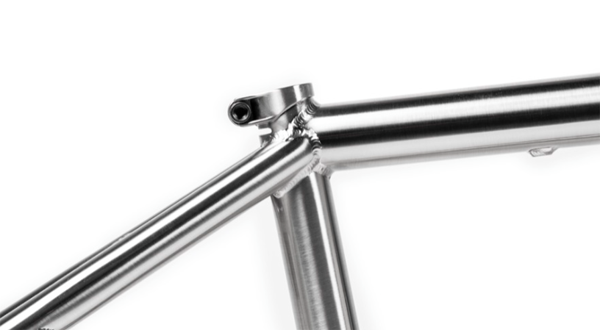
Fly Bikes use an Investment Cast integrated clamp along with their Horizontal Cut System. The cut below the clamp allows the tubing to pinch easier on the seat post, greatly reducing the stress put on the junction and making it easier get the post tight.
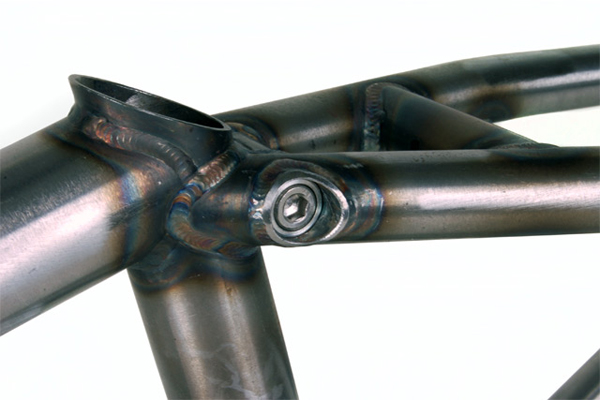
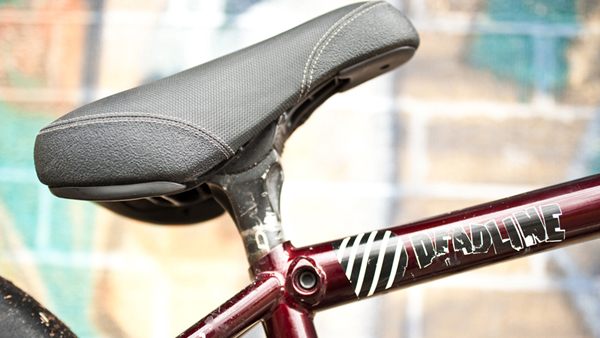
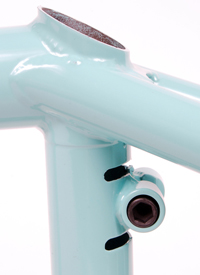
We have found the seat post clamp in a handful of different places over the years, even completely removed thanks to integrated seat posts and Animal’s seat post that eliminated the need for a seat post clamp. We did a feature a while back on the Evolution of the Seat Post Clamp that you can see a bunch of different styles.
So that wraps things up for this one! Obviously this is just the tip of the ice berg in changes we have seen in BMX frames since the 70’s and we didn’t really cover things like tubing that is smaller, butted, straight gauge, etc. or heat-treating, but I think this covers a good portion of the changes we have seen since the early 2000’s! What do you think? Let us know what you think of if we missed anything in the comments!
